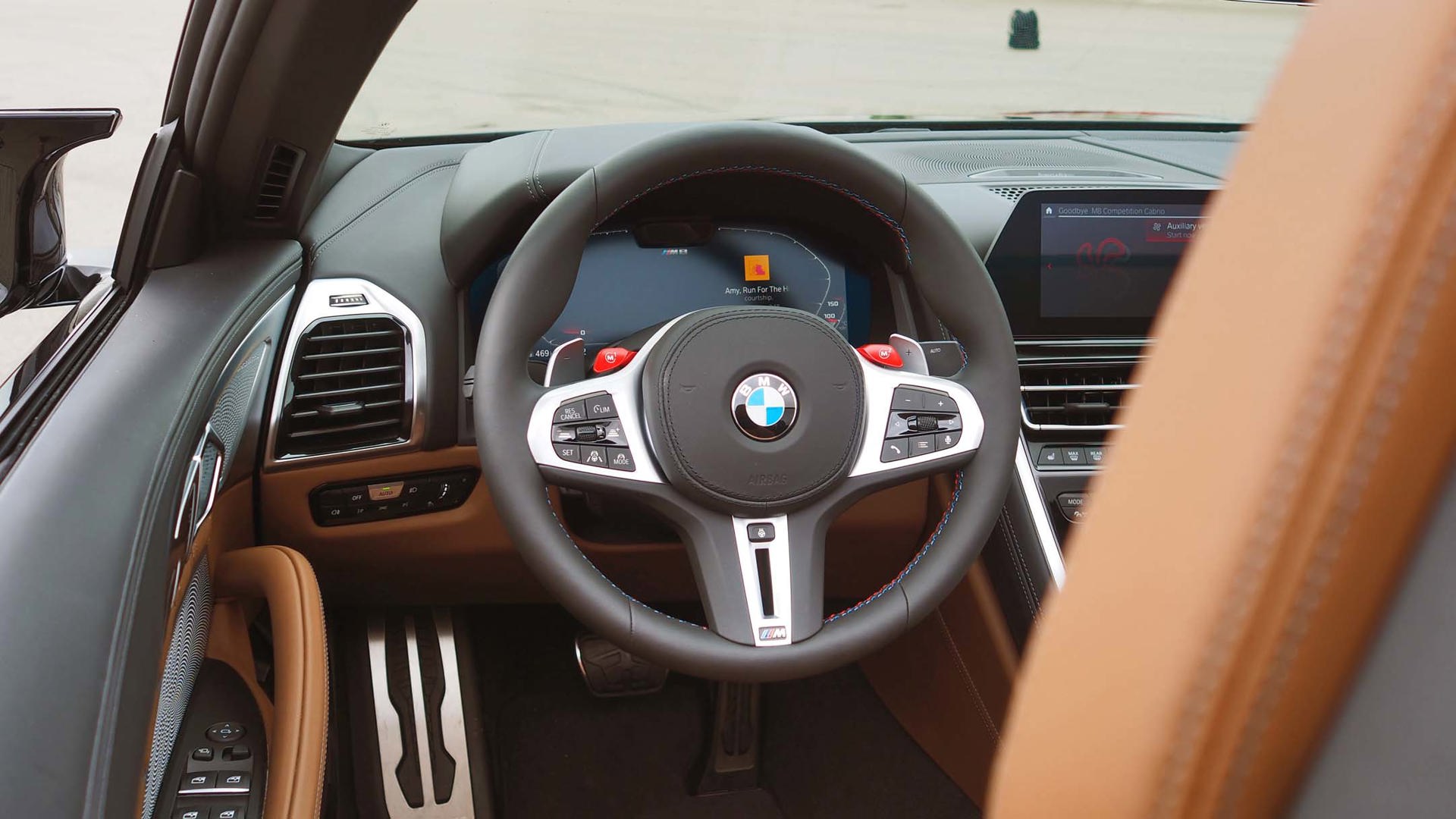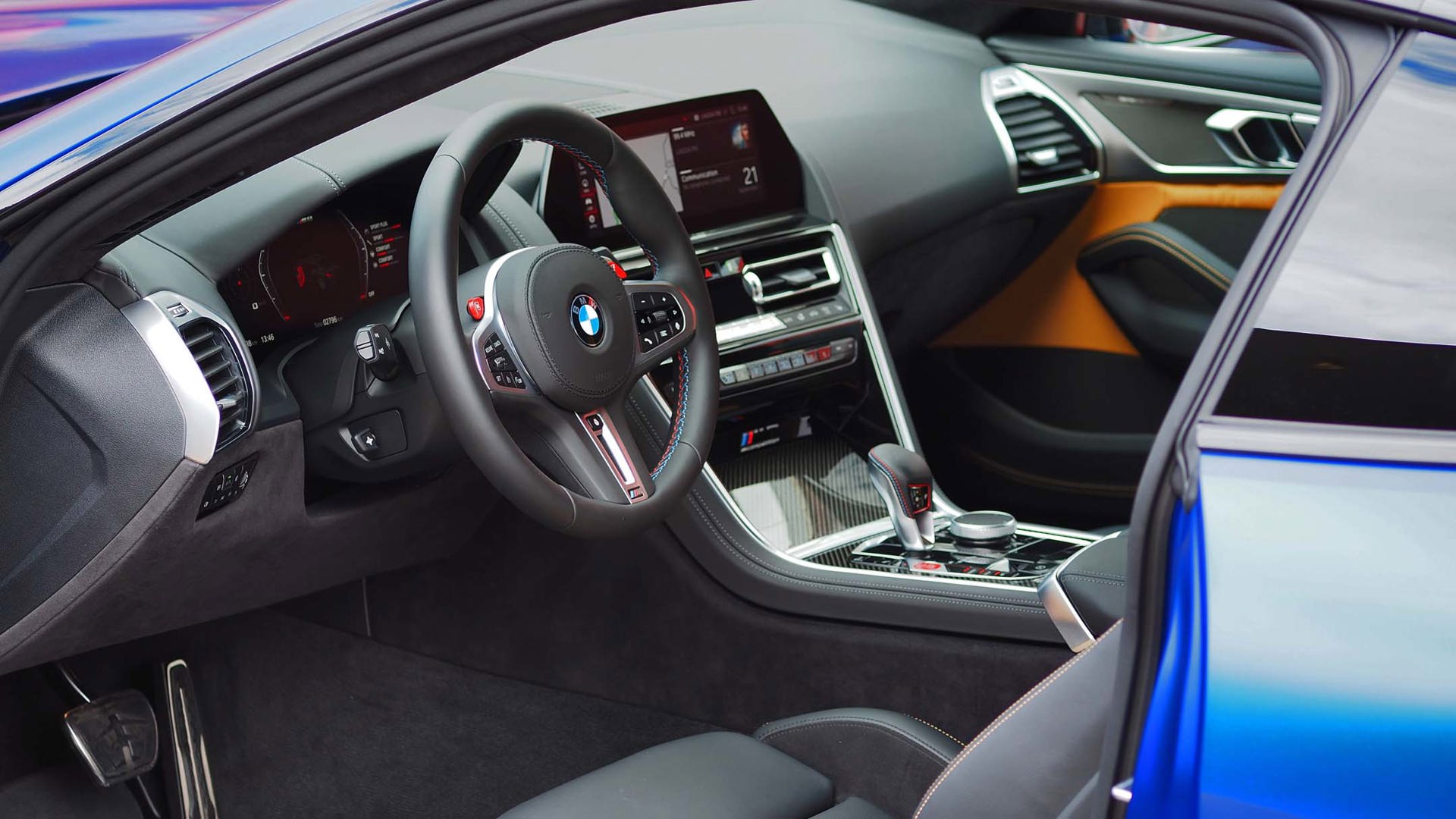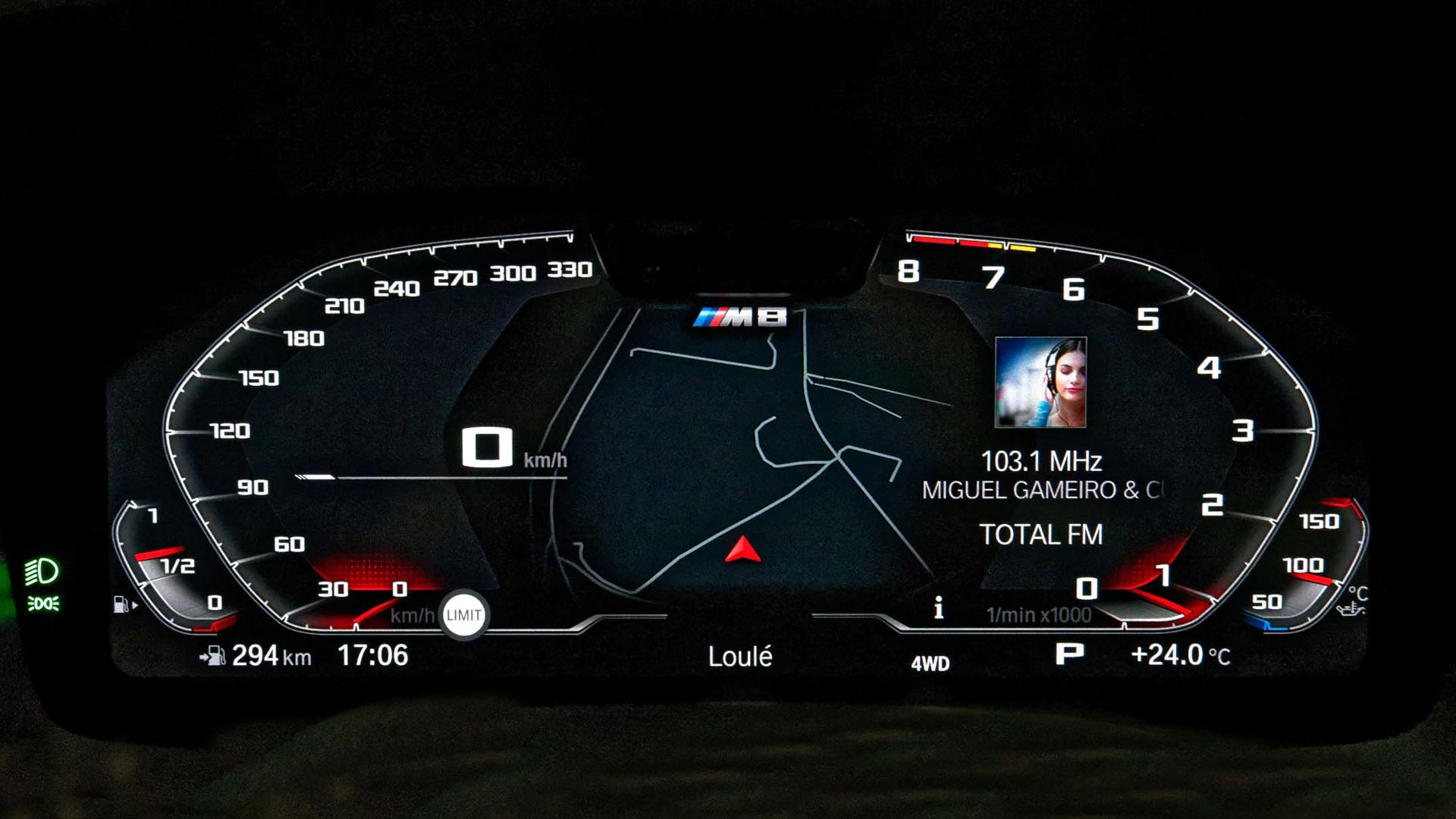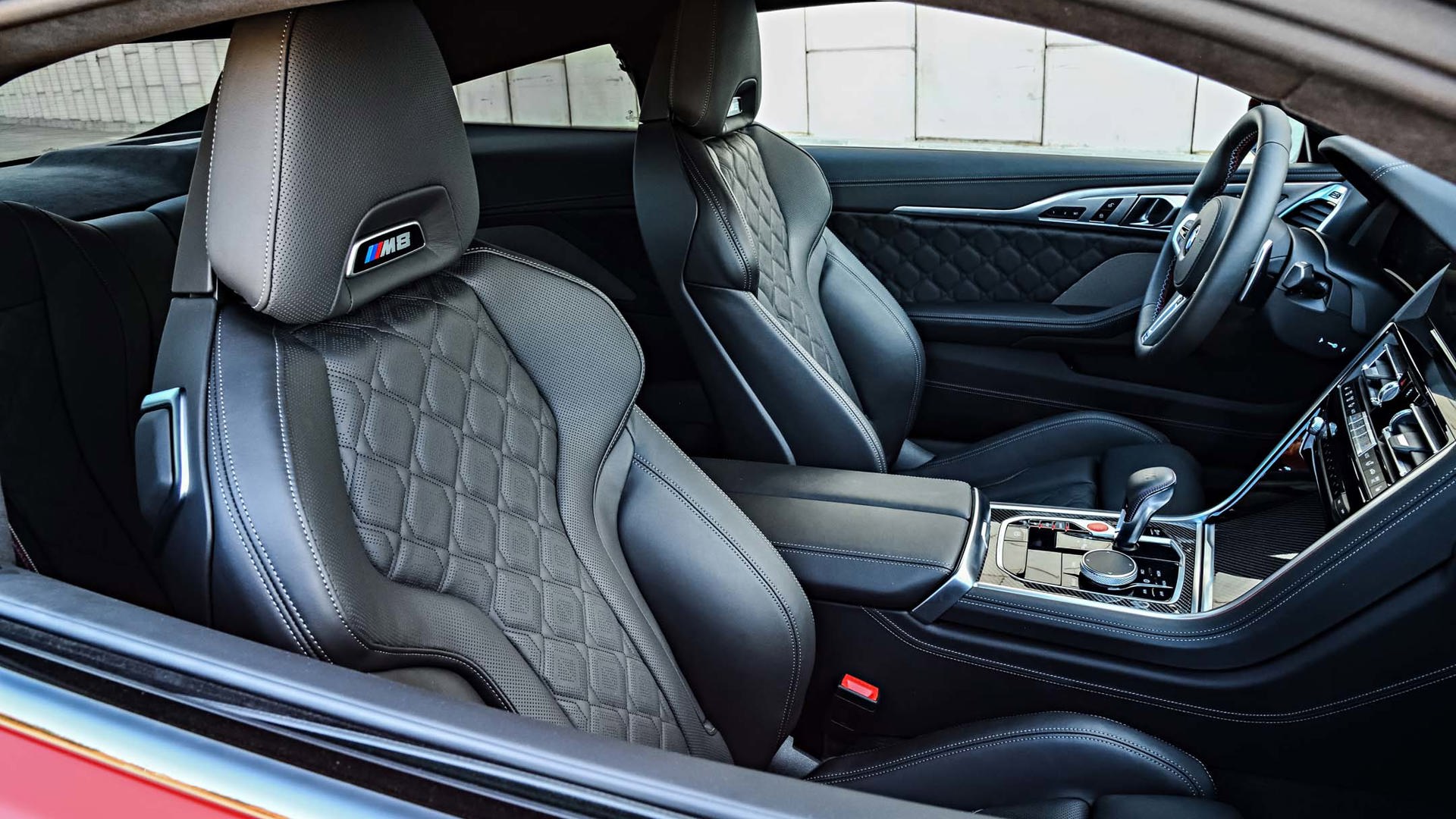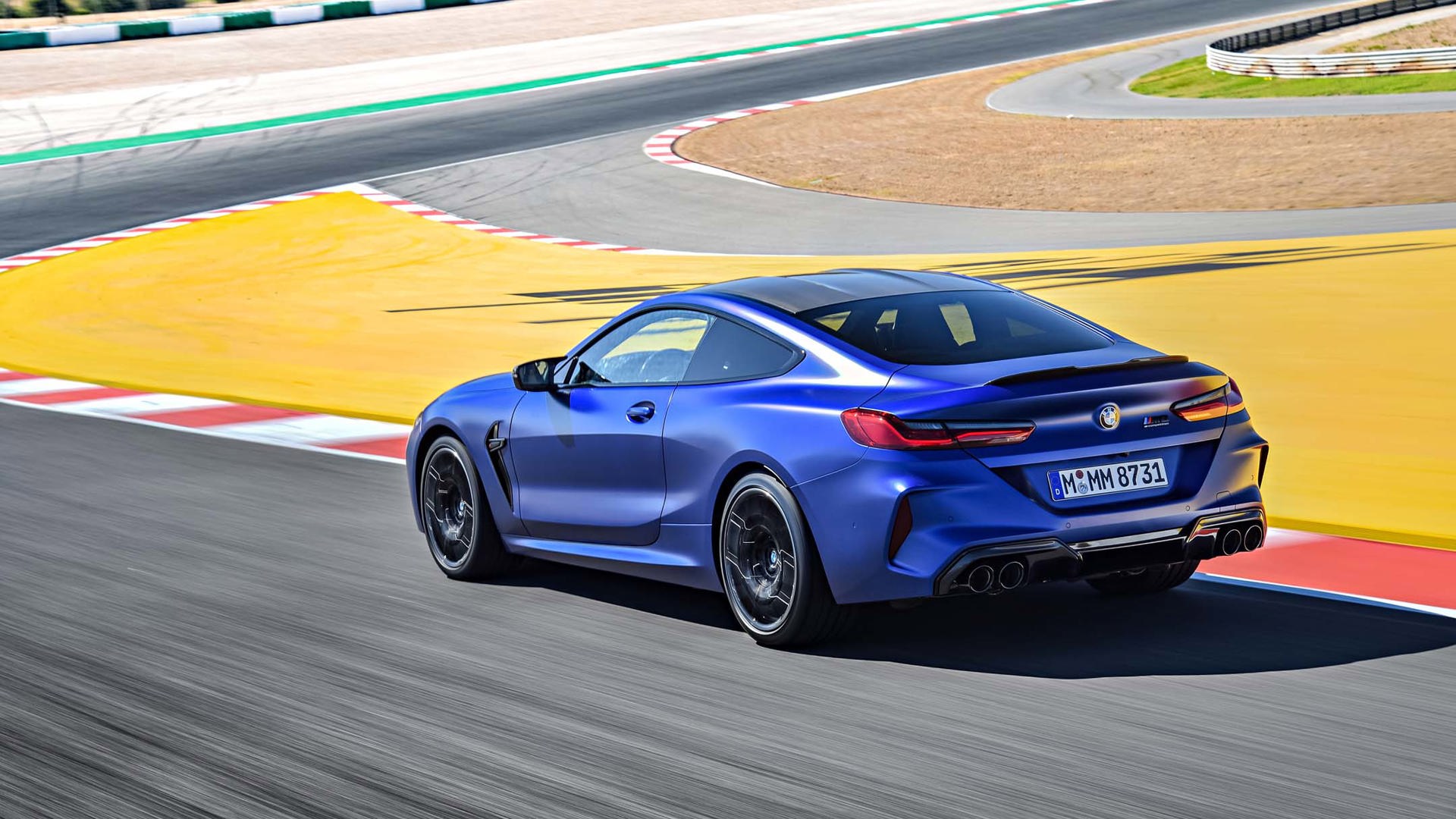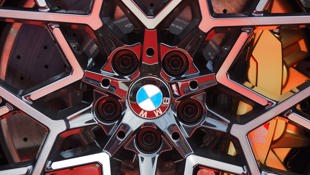When you click the shutter on a modern camera, a processor inside analyzes a multitude of factors: light, colour, focus, and more. Whatever picture you’re trying to take, that little microchip is sorting through heaps of data about how it sees its environment to – milliseconds later – take the perfect shot.
“We call it central intelligence,” says Axle Schramm, BMW M8 project manager, as we stood beneath a BMW M8 Competition Coupe that had been hoisted up in the air.
And according to Schramm, BMW’s latest M-powered bazooka has a processor just like the one in the camera I’m holding. It’s a bigger processor, and it deals with g-forces and torque distribution and lateral acceleration, not focus modes and shutter speeds and aperture priority.
But both the M8’s computer brain, and the much less powerful one in my camera, have the same job: crunching numbers to finely balance the current conditions against its user’s preferences – and thereby delivering the picture-perfect moment as the photographer, er, driver sees it.
“For instance, the rain sensor talks to the brakes,” Schramm explains. “If it’s raining, the brakes know to touch slightly, drying them off for better stopping power. And the brakes talk to the differential, which can take special action under braking to help improve performance there as well.”
Those are but two of many, many examples. Heck, the M8’s carbon-ceramic brakes (a pricey and popular option) are under constant computer simulation to determine the exact temperature of any given brake rotor at any given millisecond – without the need for weight-adding sensors.
That information is used, by the way, to give the driver consistent pedal feel and performance, regardless of rotor temperatures. That happens inside of a new brake-by-wire module, which cuts 2 kilograms from the scale. Also, it makes for better braking, and even lets drivers choose the brake pedal “feel” they like most – another digital tool for fine-tuning your picture-perfect performance-car partner.
Some 8 Series models even have four-wheel steering, which applies a slight steering effect on the rear wheels, when ideal, in relation to driver inputs. On winding roads, rear-wheel steering helps the 8 Series Gran Coupe feel smaller and livelier than its long, drawn-out silhouette leads on. The rear of the car turns subtly away from the front in corners, so smoothly, you hardly notice it. Which is, of course, the point. And on the tightest bends at a good clip, hairpin corners result in a delightful rotation of the car beneath you. Sort of like those drift-mode four-wheel steering karts at Ikea.
The rear end is alive here – not just being dragged around. As a result, the whole response from the car to steering input improves. So does rear-seat occupant comfort: since the rear is steering (not being dragged), passengers experience less lateral “shove” as corners come and go: less “side-to-side”, and more “spin”.
I ask Uwe Greiner, product manger for the 8 Series Gran Coupe, why features like this come to exist.
“It’s not technology for technology’s sake: it’s technology used to give the customer an advantage,” Grenier replies. “We listen to our dealers, our customers, and media. And from that, we find areas where an advantage might be possible for the customer.”
Three body styles and three levels of performance
The BMW 8 Series comes in a few variants: There’s the 8 Series Coupe, with two doors. There’s the 8 Series Convertible. That’s the two-door drop-top. If you love the curves and lines of the 8 Series Coupe, but need more room, the 8 Series Gran Coupe was created by Greiner and his team, just for you. It’s longer, has adult-friendly rear seats, more space, and even more sheet metal with which the stylists can work their magic. It’s that sleek 8 Series Coupe look, just longer – and the subtle rear spoiler is a bang-on styling touch.
The Gran Coupe should be a strong seller, too – as the most usable 8 Series, with more room and more doors than the rest. There’s an M8 Gran Coupe coming too, if you fancy a daily-usable four-person rocket ship for the road.
In Canada, these each get a twin-turbo V8 of 4.4 litres’ displacement with the better part of 530 horsepower, indicated by the M850i badge on their backside.
Each of these can also be had in full “M” specification that jacks output to 600 horsepower, 616 if you go for a “Competition” model. The additional output is supported by a model-specific barrage of targeted cooling, aerodynamic, structural, and performance upgrades. The result are the M8 Coupe, M8 Cabriolet, M8 Gran Coupe, and the “Competition” variants of each.
Why so much selection?
“Our shoppers love the latest new thing,” says Carsten Pries, head of product management at BMW M. “For many of those customers, their car is their new favourite gadget,” he adds, pointing at my camera. “All BMW M customers are different: if you’ve met one M customer, you’ve met one M customer. But for many, having something new and exciting is a priority – hence the wide and growing range of models.”
Pries notes that some M5 owners may be attracted by the M8’s sleeker and more upscale look, and that some M760 customers may wish to now try something smaller and more spirited. “We have to offer choice.”
Track-day Weapon: M8 Competition Coupe
And if your choice happens to be owning the fastest car BMW makes, then it’s the M8 Competition Coupe. With 0–60 mph in 3.2 seconds, there’s no faster-accelerating four-wheeled BMW at the moment.
A few laps around Portugal’s Portimão Circuit helped drive this point home.
An initial blast down the back straight provided sufficient g-force to cause a nervous tremble in my left leg, now jammed for dear life into the dead-pedal. I didn’t expect how aggressively the M8 torque-plows you into your seat, even if I should have.
Similar g-forces come from the remarkable carbon-ceramic brakes. With the new brake-by-wire module optimizing their action in real time, ferocious bite arrives from just a moderate touch on the pedal. It’s typical BMW sports-car brake-pedal feel, on steroids – and that’s whether you’re on your first lap, or sixth, and even after repeated visits far into 200 km/h territory.
Steering is beautifully set against the capability and feel of the acceleration and brakes: riled up in sportier drive modes, it’s heavy, smooth, and very fast. You direct it via a thick and chunky wheel with abundant stitching you’ll dig your nails into during those more intense moments that arrive often in Sport Plus mode.
I kept it in Sport mode, instead. It’s one of many for drivers to choose from and customize, as their skill levels grow and preferences change. In any mode, that central intelligence computer fine-tunes subsystem operation against your current preferences, with millisecond precision. You’re in a car that is engineered and programmed to give you the experience you want at any given time, and it feels that way: A button-press toggles transmission shift speed between three settings. Another alters steering feel. One more toggles the action and feel of the shocks.
You can even turn off the AWD and send all power rearwards for drift duty if desired, though the car is more thrilling with the AWD on. Mostly, that’s because you can hammer down so early out of a corner, blowing apexes away like a shotgun to a pop can. BLAM! Back on the throttle. A little squiggle from the rear, and off she goes, in serious hurry.
This rear-biased AWD system makes M8 feel more like a graceful and stable big-power rear-drive machine at times, and additional power only goes to the front axle as a sort of last resort. It’s thrilling, flattering, and leaves plenty of room for going sideways, if that’s your bag of chips. A super-cool thing? The AWD transfer unit, capable of finely splitting over 600 horsepower between two axles, is about the size of a litre-carton of milk.
For Sunday and Track Day
Elsewhere, there’s a sense that the M8 is your friend, regardless of skill level. Your writer is an experienced track-day novice, not a race-car driver. To me, with safer settings (and all four wheels) engaged, the M8 didn’t feel bothered by the gap between my skill level and its capabilities. More importantly, it made me feel like a rock star, and put on a hell of a show, the entire time.
So, expect plenty of access to M8’s performance from the get-go, and plenty of car to grow into. The torque curve is hilarious. It arrives with a WHAM and doesn’t even let up for gearshifts until the throttle is released. All the while, the V8 rumble-flutter from the quad pipes drenches the passenger cabin. Get used to the carbon-ceramic brakes, and you’ll be staring down impossibly short track-day braking zones with confidence before each corner. Warn your passengers though: the deceleration can border on uncomfortable.
Further (and to my delight), programming of the stability control system in Sport mode takes a hands-off approach for even moderate slips and slides, as novices like me get used to the car. Keep your performance driving basics in mind, and the stability control sits on its hands unless you really muck something up. It’s that perfect combination of safe and fun that many a novice loves at track day.
Finished? Just click the M8 into its most languid setting, and drive home with a generous helping of relaxation. The M8 is sufficiently comfortable where the ride is concerned, steering and shocks lighten and loosen for less driver workload and more comfort, and the exhaust quiets down for peaceful cruising.
It’s a track-day weapon you can totally take your mom to church in on Sundays. Top-down, too, if you go for the convertible.
So, a wide spectrum of cars, each with a wide spectrum of driving characteristics – and the option to access all of that with world-class performance capabilities by selecting the full-jam M8 you like best.
It’s great to have choices.
Pricing: 2020 BMW M8
M850i xDrive Gran Coupe: $121,600
M8 Coupe: $151,000
M8 Coupe Competition: $164,000
M8 Cabriolet: $160,500
M8 Cabriolet Competition: $173,500
M8 Gran Coupe Competition: TBD






















